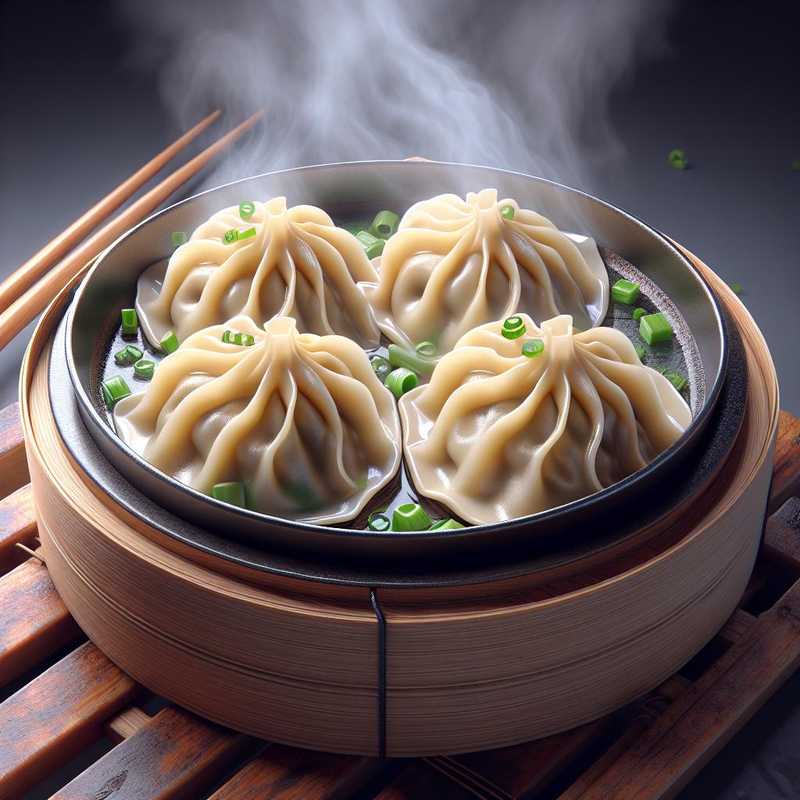Steamed Chinese Ravioli
17/11/2023The steamed Chinese ravioli, also known as Jiaozi, are a traditional dish greatly cherished both in China and around the world. They are perfect for a light lunch or dinner full of flavor. Below I present you with a basic version of the recipe with an Italian touch.
Ingredients
- 200 g of wheat flour
- 100 ml of lukewarm water
- 200 g of ground pork (you can substitute it with chicken or vegetables if you prefer a lighter option)
- 50 g of Chinese cabbage (or cabbage, if you prefer a more local option)
- 3 green onions (you can also use onion if you can’t find them)
- 2 cloves of garlic
- 1 tablespoon of soy sauce
- 1 tablespoon of sesame oil (or extra virgin olive oil to stay within the Italian vibe)
- Salt, pepper, freshly grated ginger to taste
Preparation
-
Start by preparing the dough: sift the flour into a bowl and add the lukewarm water gradually, mixing until you have a smooth dough. Work it on a floured surface until it becomes smooth, then cover it with a damp cloth and let it rest for about 30 minutes.
-
In the meantime, prepare the filling by mixing the ground meat, finely chopped cabbage, thinly sliced green onions, crushed garlic, soy sauce, sesame oil, salt, pepper, and grated ginger.
-
Divide the dough into small portions and roll them out into thin circles.
-
Place a teaspoon of filling in the center of each dough circle, then fold in half and seal the edges by pressing with your fingers or, if you want to be particularly artistic, by crimping the edges into small folds.
-
Bring water to a boil in a steamer, then arrange the ravioli on a sheet of parchment paper inside the basket to prevent sticking. Steam for about 15 minutes or until the dough becomes translucent.
-
Serve the steamed ravioli accompanied by a sauce made from soy sauce, rice vinegar, and a drizzle of spicy oil if you appreciate a hint of zest.
Curiosity
The Jiaozi is traditionally prepared for the Chinese New Year, when it is eaten to bring good luck. It is said that their shape resembles that of ancient Chinese coins, a symbol of prosperity. In Italy, to continue this tradition of good fortune, you might serve them on the occasion of a special dinner or as a prelude to an important festive event.
